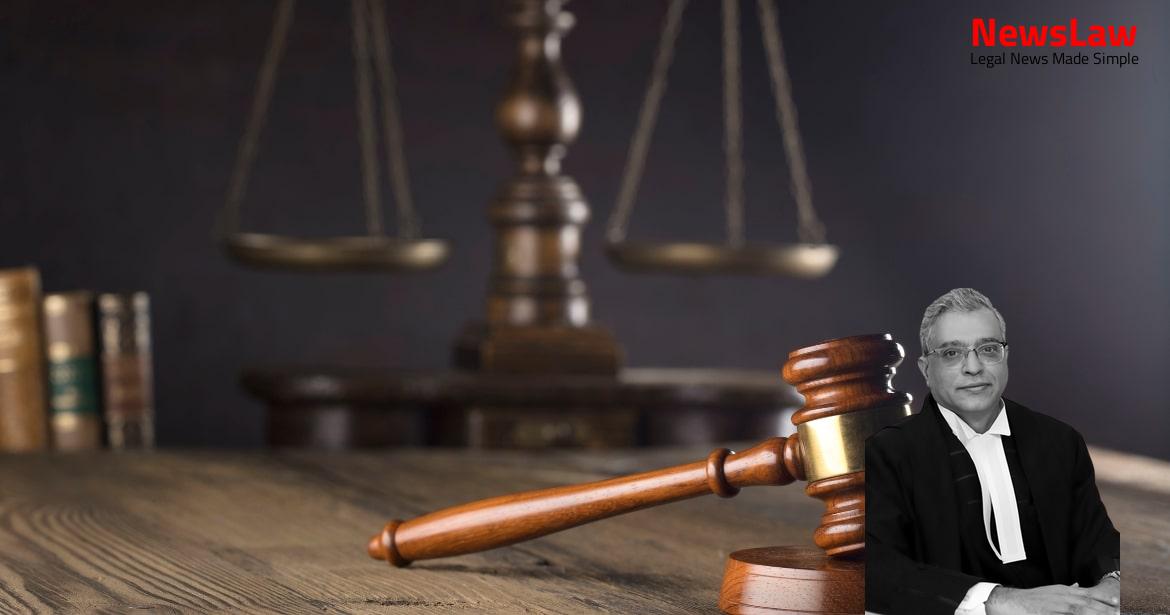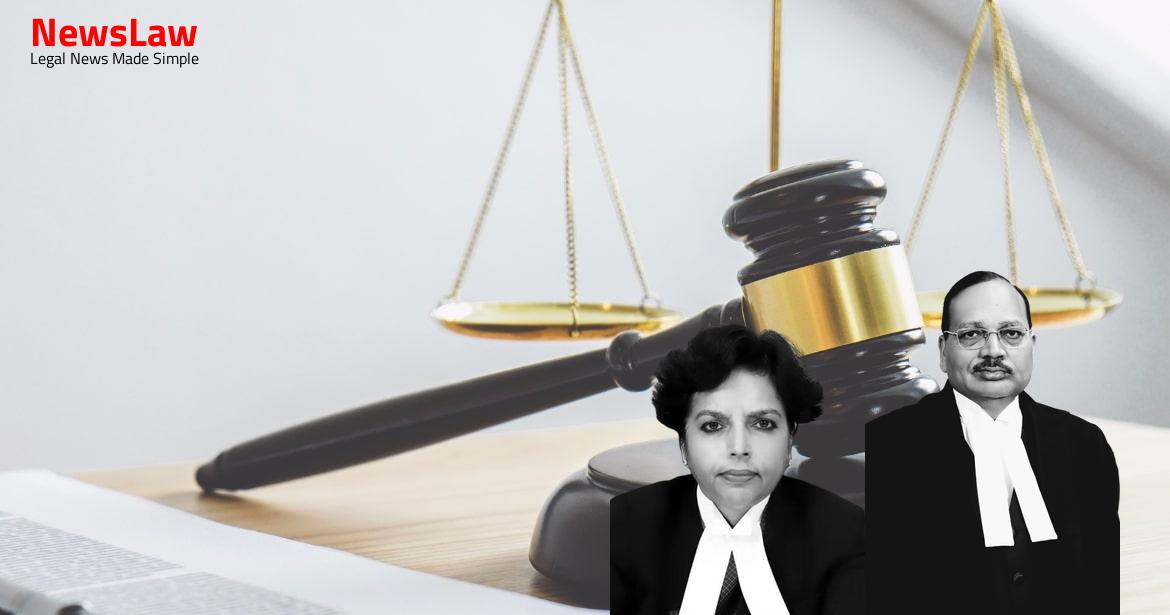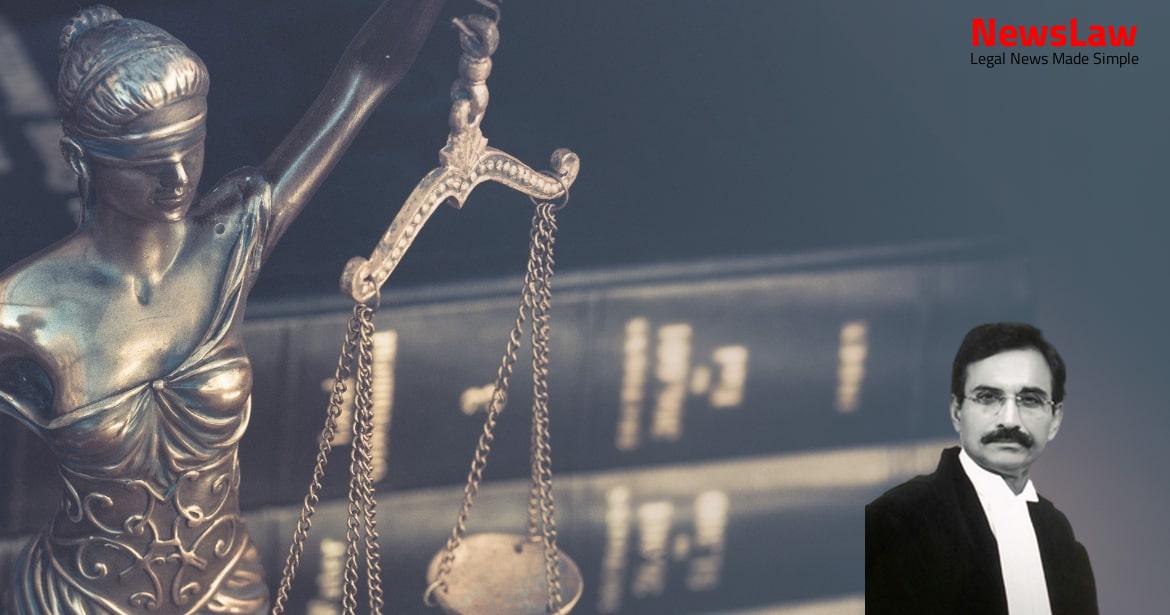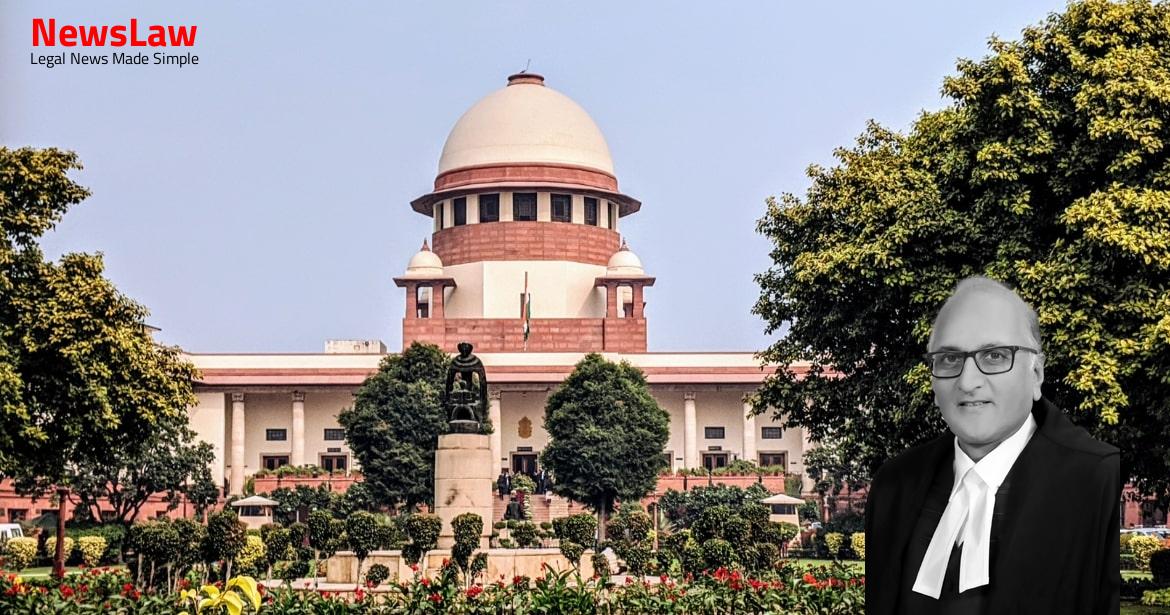Explore the intricate legal analysis conducted by the Court in assessing a case based on circumstantial evidence. In this summary, we unravel the importance of establishing a conclusive chain of events to prove guilt beyond a reasonable doubt. The scrutiny of extra-judicial confessions and the necessity for corroboration are highlighted. The constraints of suspicion versus proof in convicting an accused are showcased through a critical examination of a recent case. Stay tuned for a deep dive into legal intricacies.
Facts
- The accused/appellant, Ram Niwas, pleaded not guilty and claimed to be tried.
- The High Court of Punjab & Haryana at Chandigarh dismissed the appeal filed by the accused, challenging the judgment and order passed by the Sessions Judge, Sonepat.
- The appellant, Ram Niwas, was convicted for the offences under Section 302 and 201 of the IPC and sentenced to rigorous imprisonment for life, along with fines and additional imprisonment terms in default of fine payment.
- The sentences for both offences were directed to run concurrently.
- The prosecution’s case states that the accused/appellant-Ram Niwas, the complainant-Deep Chand, and Bhim Singh visited the house of Chander Singh in Rewli village on 7 March 2003.
- After a report was lodged with the police at 4.45 p.m., the accused got angry and verbally abused the deceased Dalip Singh.
- Accused/appellant-Ram Niwas provided unsatisfactory answers regarding the whereabouts of Dalip Singh.
- The group had gone to propose the remarriage of Sunita to Rampal, son of Dalip Singh.
- Accused/appellant-Ram Niwas admitted to strangling Dalip Singh when confronted about his disappearance.
- The complainant Deep Chand and Bhim Singh found the partially burnt body of Dalip Singh wrapped in plastic after removing paddy straw.
- Accused/appellant-Ram Niwas fled upon facing resentment from Deep Chand and Bhim Singh.
- The body of Dalip Singh was found concealed in paddy fodder in Chander Singh’s drawing room the next morning.
- The accused/appellant-Ram Niwas was accused of trying to destroy evidence by burning the body of Dalip Singh.
Also Read: Presumption of Genuine Endorsements in Cheque Case
Arguments
- Perusal of postmortem report does not prove beyond reasonable doubt that the dead-body was of deceased Dalip Singh.
- The face of the dead-body was not recognizable during the postmortem examination.
- The prosecution failed to establish that the dead-body was indeed that of deceased Dalip Singh.
- The evidence of the complainant and another witness is deemed unreliable by the counsel.
- The conduct of the witnesses, in not immediately informing the Police Station after witnessing the dead-body, is considered suspicious.
- Deep Chand (P.W.9) and his brothers went to village Rewli on March 7, 2003.
- Postmortem examination of the deceased was conducted by Dr. Sanjeev Malhotra (P.W.5).
- The dead-body had deep burns, emitted the smell of kerosene, and was unrecognizable.
- The body was missing hair, scalp, eye balls, eye-lashes, both ears, both feet, lips, and nose.
- Dr. Sanjeev Malhotra admitted that the body was not recognizable.
- Accused/appellant-Ram Niwas made an extra-judicial confession before the complainant-Deep Chand (P.W.9) and Bhim Singh (P.W.10).
- The confession is corroborated by the recovery of ‘ash’ concealed in a plastic cover on the memorandum of the accused/appellant-Ram Niwas.
Also Read: Medical Negligence and Compensation: A Landmark Decision
Analysis
- The prosecution case relies on circumstantial evidence.
- The complainant and witness persuaded both sides to avoid a fight.
- The deceased did not return after half an hour, leading to enquiries by the witnesses.
- The brothers went to propose re-marriage for Rampal in village Rewli.
- There are residential houses near the accused’s house.
- Accused told witnesses to sleep on the first floor as he and the deceased spoke.
- In the morning, the accused said the deceased had gone to ease himself.
- No independent witnesses called even though available nearby.
- Police station is close to the incident location.
- The alleged confession by the accused was made in a police lock-up.
- Discovery of ‘ash’ and ‘plastic can’ is a key prosecution evidence.
- The witnesses delayed informing the police about the incident.
- The witnesses did not raise an alarm upon finding the deceased’s body.
- The prosecution version of events seems unlikely based on the circumstances.
- The conduct of the witnesses in not informing others immediately raises doubts.
- No neighboring residents testified to support the prosecution’s case.
- The face of the deceased was difficult to recognize according to medical evidence.
- Overall reliance on the extra-judicial confession by the accused.
- Before a case against an accused can be fully established, the circumstances from which guilt is drawn must be fully established.
- The law on conviction based on circumstantial evidence is well-established in the case of Sharad Birdhichand Sarda vs State of Maharashtra.
- The evidence in a case based on circumstantial evidence should be consistent only with the guilt of the accused.
- The circumstances should be of a conclusive nature and tendency, excluding every hypothesis except guilt.
- There must be a complete chain of evidence, leaving no reasonable ground for a conclusion consistent with innocence.
- Extra-judicial confessions must be used with caution and corroborated for reliability.
- Suspicion, no matter how strong, cannot replace proof beyond reasonable doubt in convicting an accused.
- The prosecution in the present case failed to establish a chain of events leading exclusively to the guilt of the accused.
- The judgment and order of the learned Sessions Judge and the High Court are not sustainable.
- This view is based on a specific understanding of the matter.
- The reasoning behind the decision is tied to the aforementioned view.
Also Read: Remand of Writ Petition for Restoration and Decision on Merits
Decision
- Pending applications shall stand disposed of.
- The appeal is allowed.
- The judgment and order of conviction and sentence dated 11/12 January 2005 of the Sessions Judge, Sonepat, and the High Court judgment dated 16 March 2009 are quashed.
- The accused, Ram Niwas, is acquitted of all charges.
- The bail bonds are discharged.
Case Title: RAM NIWAS Vs. THE STATE OF HARYANA (2022 INSC 818)
Case Number: Crl.A. No.-000025-000025 / 2012



